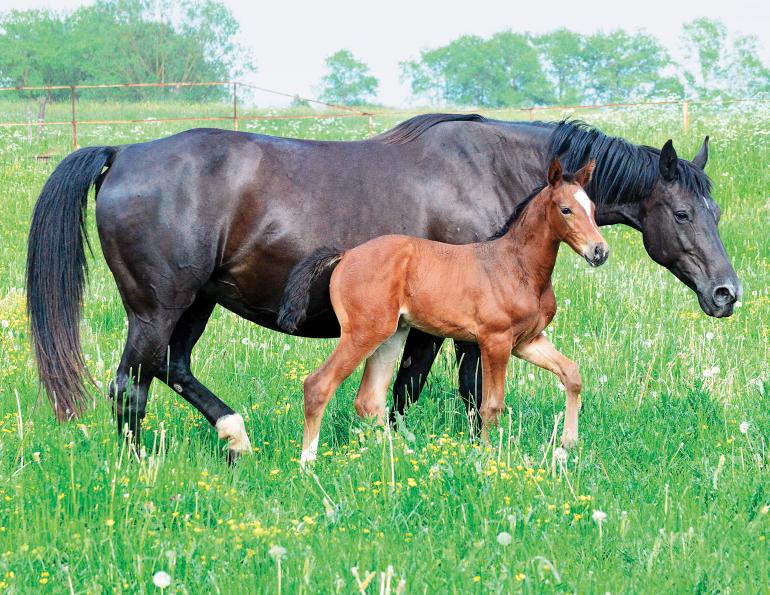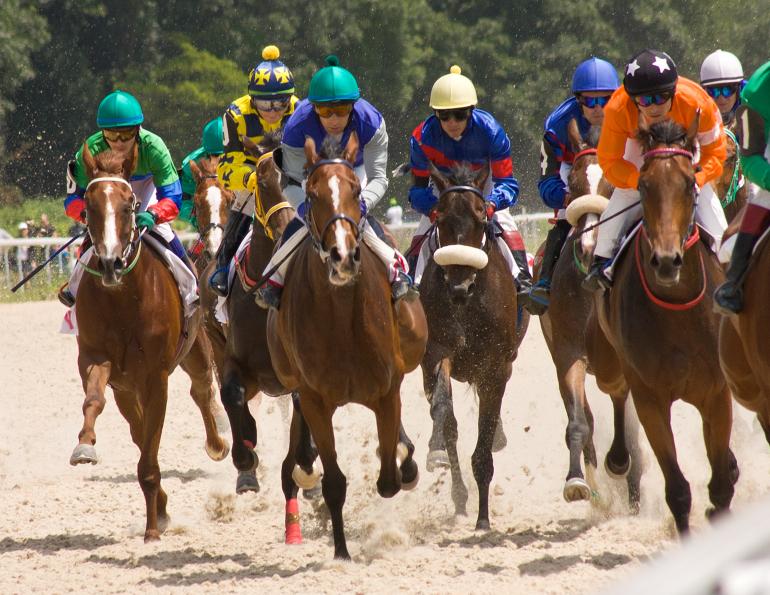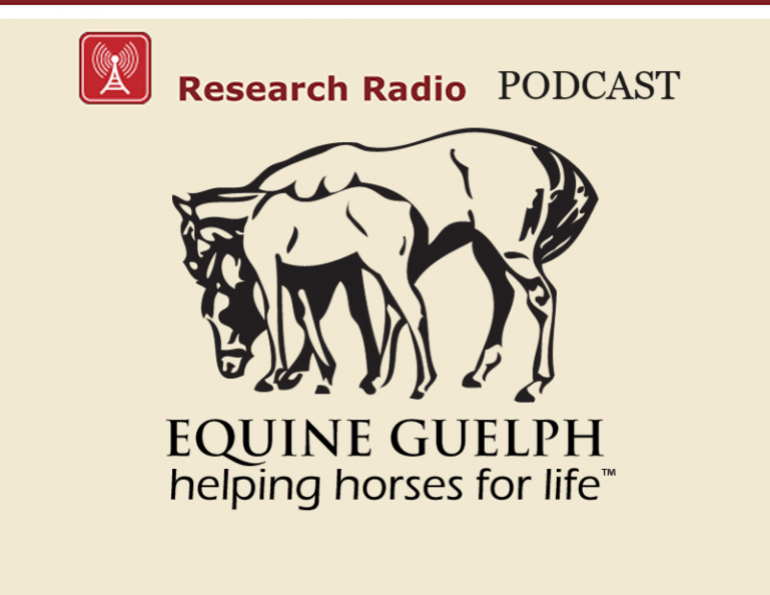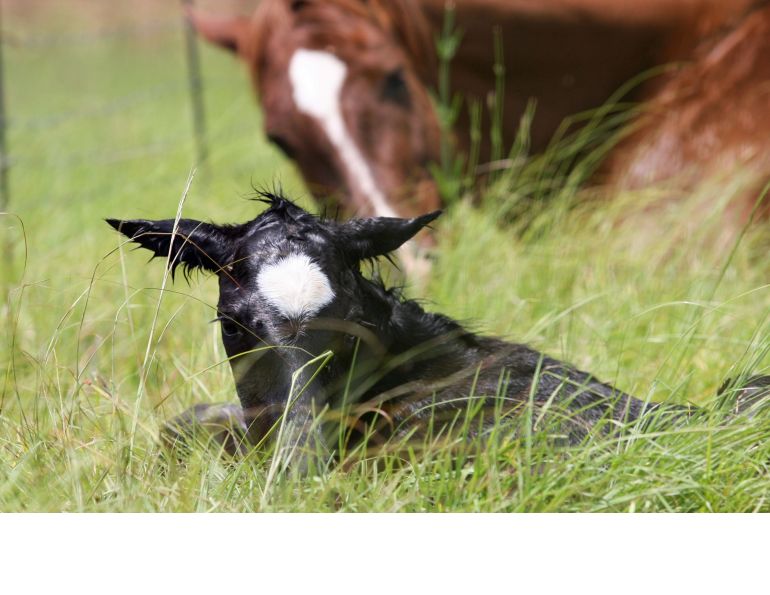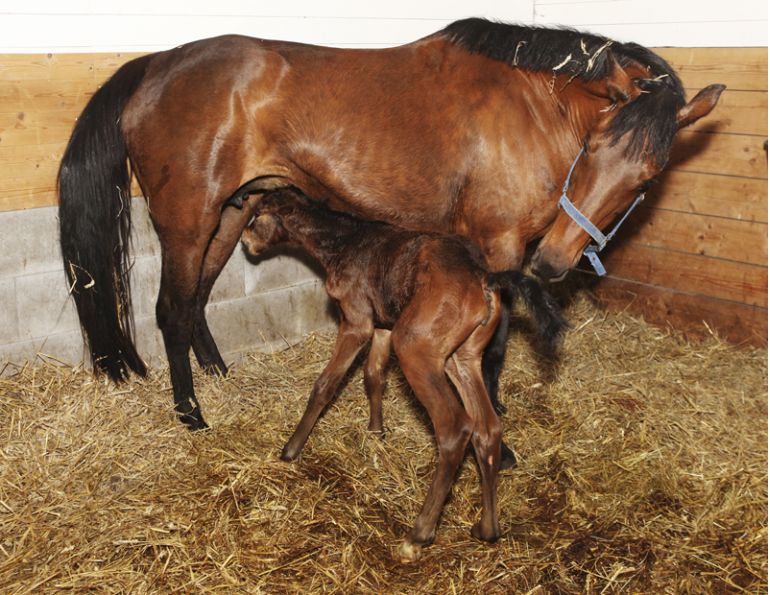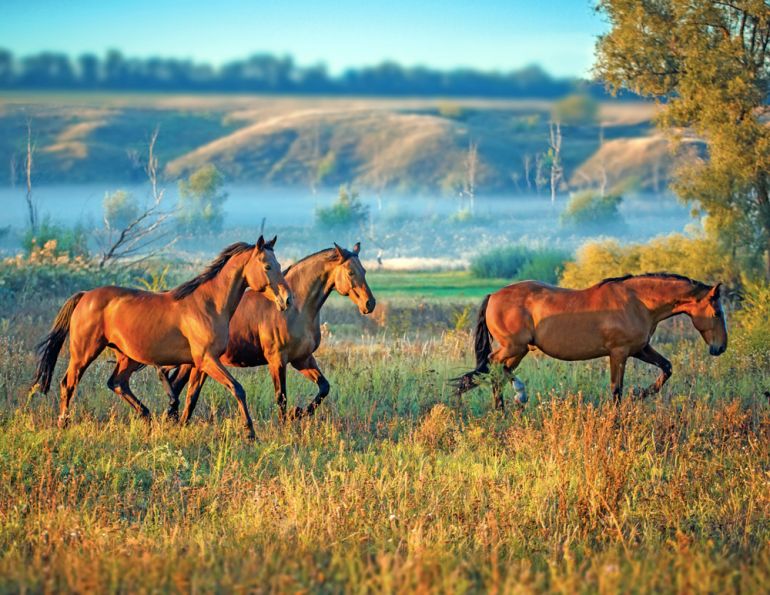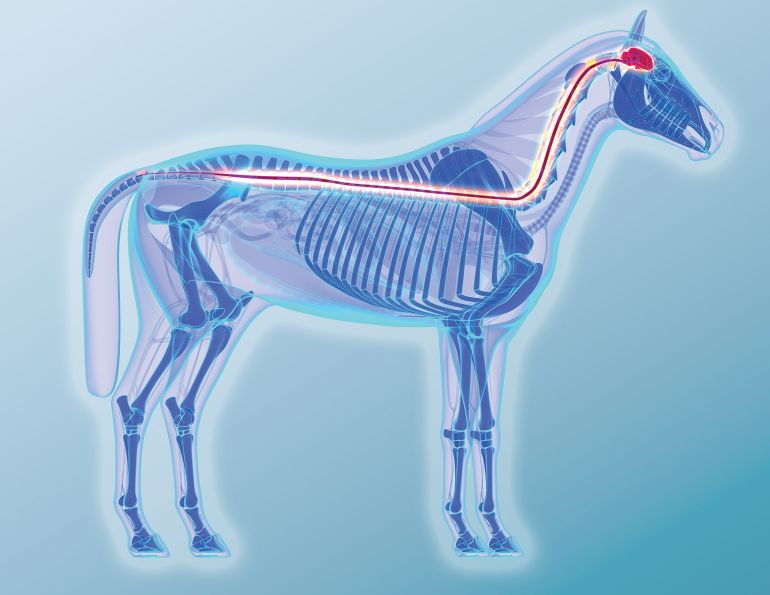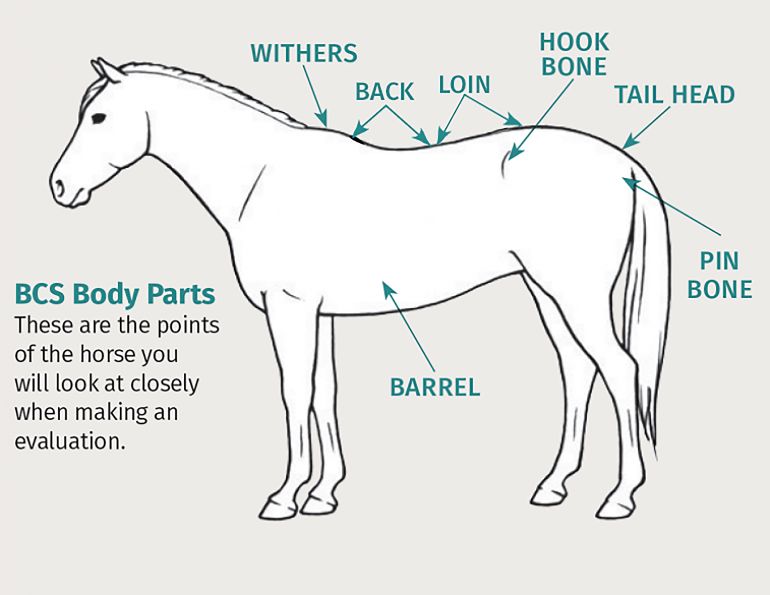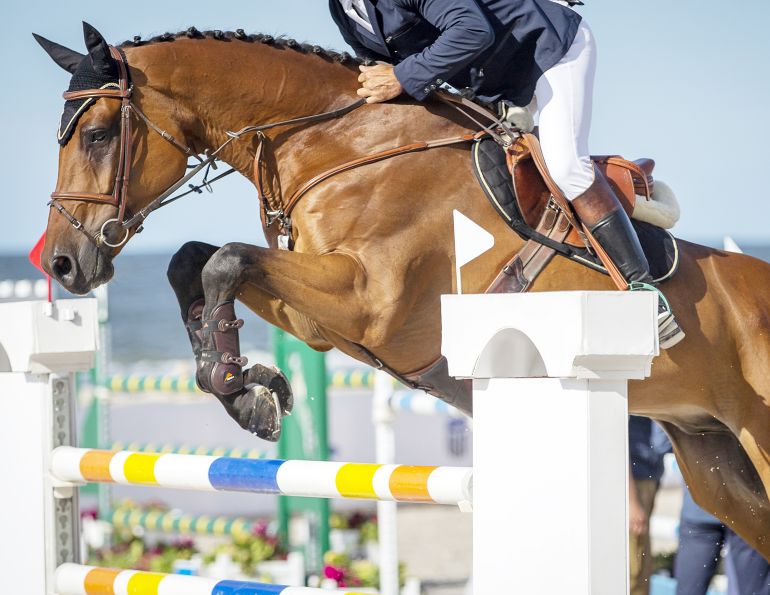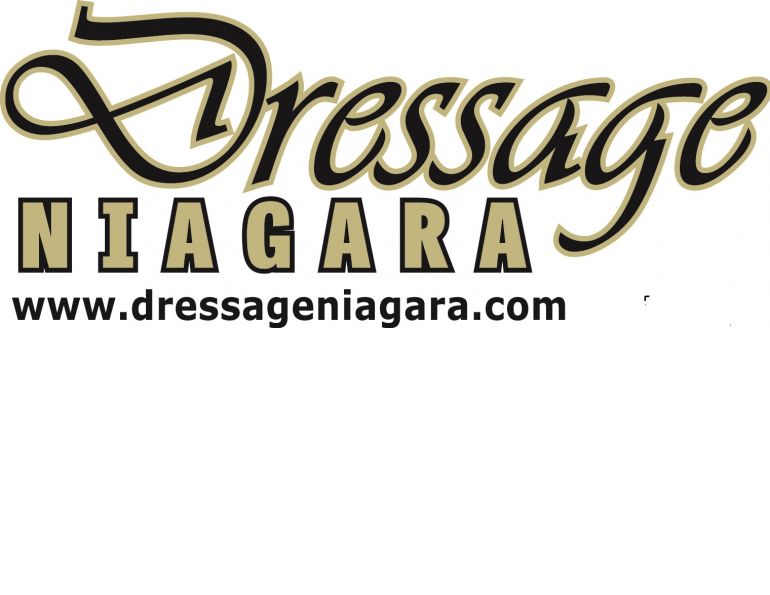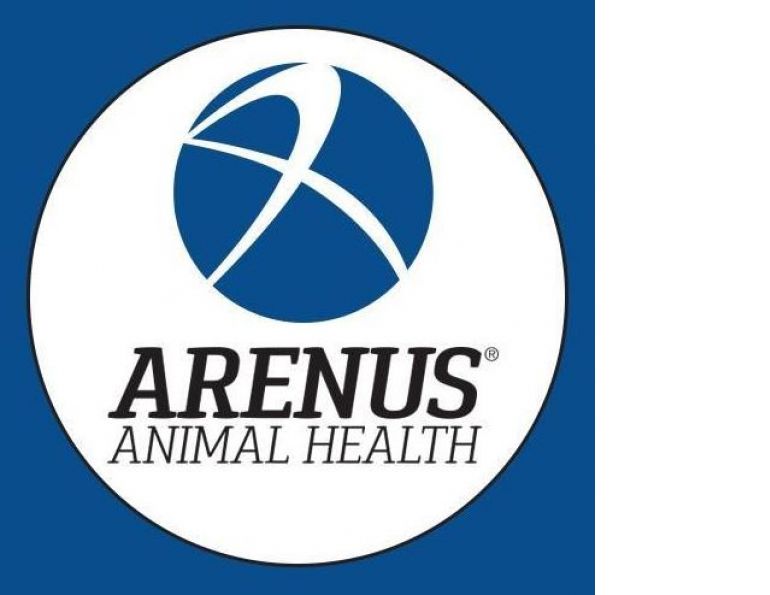Managing Nutrition for Safe Growth in Young Horses
By Shelagh Niblock, PAS
For any horse owner, the birth of a foal is always an eagerly awaited event. That baby, the product of the carefully planned mating of two superior parents, can elicit a range of emotions for the owner, including excitement and awe, but often anxiety and worry as well. One of the concerns the owner of a newborn foal may have involves the risk of the foal developing developmental orthopedic disease (DOD), which is a name applied to a group of conditions that can affect the growing foal, including physitis, acquired angular limb deformities, flexural deformities, cervical vertebral malformations, acquired vertebral deformities, and finally, osteochondrosis (OC).
DOD conditions are caused by a disruption of skeletal development and maturation in the young horse. Skeletal development in horses occurs when the protein matrix (cartilage) at the growth plates in the bones of the juvenile skeleton is mineralized by specialized cells called chondrocytes. Cartilage is ossified or mineralized into bone at these sites by a process called endochondral ossification. Anything that disrupts this process will cause weak or structurally compromised bone, such as bone lesions, that can result in chips or fragments breaking loose. Bone lesions are of particular concern at the joints or junction of bone surfaces, and can result in osteochondritis dissecans (OCD). The diagnosis of OCD or any one of the above-noted conditions in a young horse can be a life-changing development, depending on what age it is discovered and if and when remedial action is taken.
DOD usually develops in the growing foal during the first 24 months of life, and the period of time around weaning is when the owner needs to be especially vigilant. In some cases, the developmental issues are initiated in utero, and research shows that the nutritional regime of the pregnant mare can have a bearing on the ability of her foal to grow healthy bone. The key factors thought to be involved in the development of DOD in the growing horse are rapid growth, diet, biomechanical stress, and hormonal influences. Genetics also are suspected of having a significant role in the development of these disease conditions.
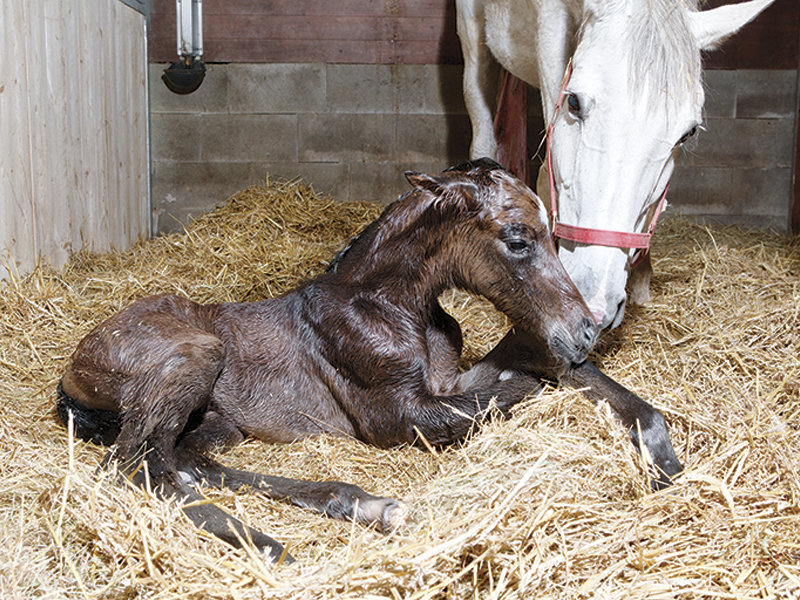
Development issues can start in utero, and research shows that the nutrition the pregnant mare receives can impact her foal’s ability to grow healthy bone. Photo: Shutterstock/Pfluegler photo
Bone Growth and Osteochondrosis
Oseochondrosis (OC) is the subject of a great deal of ongoing research about why the process of mineralizing cartilage to healthy bone in the growing foal might be interrupted. As mentioned earlier, genetics may be significant, and potential sites within the genome of horses have been identified as relevant. Other research suggests that blood flow may be impaired to the affected sites in the growing bone, creating pockets of dead tissue, which may eventually become detached from the bone and migrate into the joint. The nutritional regime of the growing horse is also very important, as is the rate of that growth.
Related: How to Care for Your New Foal
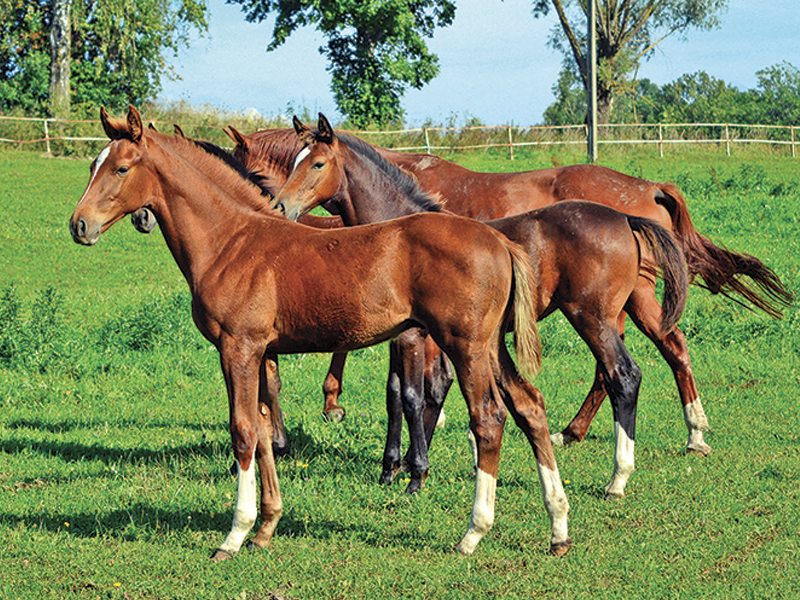
Although osteochondrosis lesions are likely to happen during the first few months of life, the period of growth between six months and one year of age can be significant in correcting OC through diet and feeding changes that encourage consistent, slow growth. Photo: Shutterstock/Damona
In horses, the development of OC lesions is likely to happen in the first few months of life, but remedial treatment, such as diet, can facilitate the correction of defects providing they are introduced soon enough. The period of growth between six months to one year of age is known to be especially significant in terms of correcting early stage OC bone lesions through diet and feeding regime changes that facilitate slow consistent growth. Compensatory growth in foals that have suffered growth setbacks due to management or health issues can be rapid, and may result in the development of OC lesions. Lesions that are not detected until after 12 months of age tend to be less responsive to diet changes, but surgery to remove bone fragments may be appropriate for some of these horses.
Related: Flexural Limb Deformities in Foals
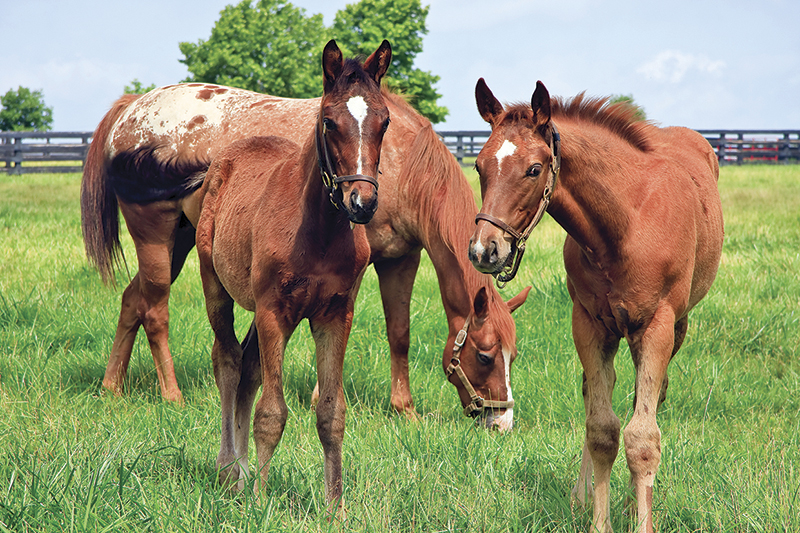
Developmental orthopedic disease usually develops during the first 24 months of life. Owners should be especially vigilant around the time of weaning. Photo: iStock/Jill Lang
Nutrition
The diet of both the growing foal and his dam is an important part of a management plan for safe growth in the foal. Attention to the dam’s diet both before and after parturition is important, particularly from the tenth month of gestation onward. Diet also affects milk quality and quantity in the lactating mare, another important aspect of the nutritional management of a growing foal.
Energy and the Relationship to Hormonal Control
The impact of energy provided by feed on the development of OS, and potentially DOD, is a subject of great interest to scientists. The research is not conclusive, but it does suggest that young horses fed experimental diets high in starch and sugar, from very early in life, are more likely to have high plasma insulin and, potentially, be insulin resistant.
Consistently high-circulating insulin has a cascade of effects on other hormones in the foal’s body, including the growth hormone insulin-like growth factor 1 (IGF-1), and important thyroid hormones. Research suggests that high levels of plasma insulin in the foal may delay the maturation of the chondrocytes, thereby delaying the onset of the ossification or mineralization of the young bone. Delays such as this could be why we see DOD in some foals.
However, research also establishes that foals do better and maintain healthier growth rates more easily post-weaning, when they have been started on a “creep” feed prior to weaning. Growing foals do need energy provided in balance with the other nutrients in their diets, so avoiding all supplemental energy sources for the growing horse is not the answer to avoiding DOD. High quality fibre sources — and in some instances, fat supplementation — can be helpful in providing safe energy to the growing foal. Best management practices for safe, sustained growth for the weanling include providing good forage in combination with a complete foal starter concentrate or a balancer pellet, fed according to body weight.
Protein
Protein content and quality in the diet is not usually an issue in the pre-weaned foal. Neither high protein diets (126 percent of National Research Council [NRC] recommendations for growing foals) nor low protein diets (9 percent protein of the NRC minimum protein recommendation of approximately 13 percent) fed in research trials conducted on growing foals, had a significant impact on the incidence of DOD. Very low protein diets in growing foals did depress their growth rates, feed intake, and feed utilization, but it did not appear to make them more susceptible to DOD. Supplementation of the amino acids lysine and threonine have shown to be beneficial in facilitating the reduction of bone lesions characteristic of OC that were already present in other monogastric species. Both of these amino acids are in plentiful supply in mare’s milk, but their supply declines as lactation progresses. Well ahead of the initiation of weaning, introducing a foal to a starter pellet using a creep feed system can help offset the increasing shortfall of nutrients in the mare’s milk as her lactation advances. In general, diets for both weaned and pre-weaned foals need to be between 13 and 17 percent protein on a dry matter basis. Protein must be fed in balance with energy to support healthy growth. Growing foal diets that are very low in energy will not support healthy growth, regardless of the protein levels.

Foals are better able to maintain healthier rates of growth after weaning when they have been started on a creep feed prior to weaning. Introducing the foal to a starter pellet using a creep feed system will help compensate for the increasing shortfall of nutrients in the mare’s milk later in lactation.
Related: Collecting Colostrum for your Foal
Can a Growing Foal be Fed Too Much Calcium?
Research has shown that foals fed calcium at 300 percent of the NRC recommendation do not have any more incidence of DOD than those fed at 100 percent of NRC. Extra calcium is not necessarily an issue for the growing foal, as long as sufficient phosphorous is provided. Calcium and phosphorous must be fed at a ratio of approximately 1.5:1 to a maximum of 3:1 respectively, for optimum bone development. Excessive calcium without sufficient phosphorous is not good for growing horses of any age, as it can tie up the availability of other minerals such as magnesium, iodine, zinc, and manganese just to name a few. Extra calcium must also be excreted though the urine, which can put undue stress on the kidneys of the growing foal. Foals fed high levels of phosphorous relative to calcium will have an increased risk of DOD as phosphorous will tie up available calcium, which interferes with the ossification of the chondrocytes. Forages are generally low in phosphorous, but grains can be high. For this reason, caution should be taken in supplementing the diets of growing foals with grains such as oats, barley, or COB (corn- oats-barley).
Mare’s milk provides a good supply of both calcium and phosphorous, but according to the NRC equine nutritional guidelines, it ceases to be an adequate supply for the growing foal past about three months of age. This fact again supports the concept of getting foals started on a good quality foal starter feed early in their pre-weaning life, to assure the best growth of healthy bone.

The mare’s diet before and after giving birth affects the quantity and quality of the nutrients her growing foal receives. Photo: Shutterstock/Iuliia Khadibulina
Trace Minerals
The two trace minerals with the most significant impact on bone development in the growing foal are copper and zinc. Copper is very important in both pre-weaned and weaned foal diets. It is responsible for the production and activation of an enzyme called lysyl oxidase, which is necessary for collagen synthesis and the formation of the cross linkages between collagen cells in the growing bone. Growing foals with diets deficient in copper may have defective collagen cells, leading to lesions in the cartilage. The significance of copper in bone synthesis and the incidence of DOD has been extensively researched, and indications are clear that both the amount of copper in the diet and the ratio of copper-to-zinc are important for healthy bone development in a foal.
Ensuring that pregnant mares get sufficient copper in their diets in the last two to three months of gestation also has a positive effect on bone development in the foal. Forages in Forages in Western Canada, for example, are not typically a significant source of copper, suggesting that supplementation of the late-term pregnant mare with a balanced vitamin/mineral supplement is advisable. Copper in the diet of the mare is transferred to the fetus, where it is stored in the liver. Foals are born with significant levels of liver copper, which they rely upon to facilitate bone growth and repair OC lesions during the time when their diet is largely milk. Milk itself is not a good source of copper; so again, it is in the best interest of the growing foal to introduce a good foal starter as soon as possible before weaning, to ensure that there is never a shortfall of copper in the diet of the growing foal.
Zinc is a trace mineral found in many of the typical feeds available for our horses, but excess amounts do reduce the availability of copper. This can be especially significant for the growing foal. For this reason, zinc should never be supplemented at a zinc-to-copper ratio greater than 4:1 - 5:1 in the diet of a growing foal.
Iron
Iron is a trace mineral, which research has shown can be detrimental to health if over-supplemented, but it has not been identified in any equine research literature as a significant problem in the typical diet of a growing foal. The practice of providing injectable iron or dietary iron supplements to foals is not advisable, but the iron present in a foal starter ration or in forages should not be viewed with concern for the owners of growing foals.
Management Considerations
Managing the successful growth of a foal is a multifaceted task. Your management plan should start with the dam of the foal while she is still pregnant. Ensure she is not carrying excess body weight, and that she has a diet of good quality forage combined with a mineral supplement or balancer pellet. As she gets closer to parturition, it is important to ensure she has enough energy and protein in her diet to support the growing fetus and to make sufficient good quality colostrum. She should be getting a mineral with adequate calcium and phosphorous levels, and it should contain at least 150 to 300 mg per head per day copper. Once the mare has foaled, ensure that she gets feed with enough energy and protein to manufacture sufficient, high quality milk to support her foal.
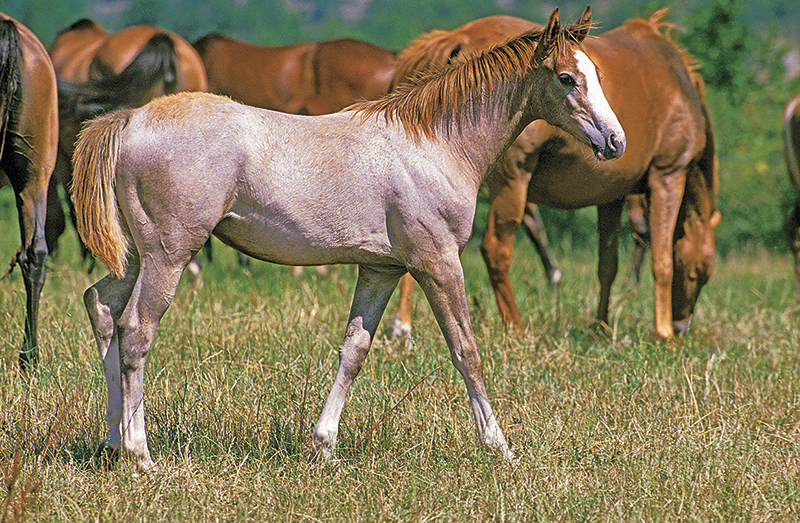
Consult with a qualified equine nutritionist or your veterinarian if you think your foal might be growing too fast, and be alert for swelling or heat in the foal’s joints between two and twelve months of age. Photo: Dreamstime/Slowmotiongli
Once on the ground, ensure your foal gets exercise, but hold off on training other than halter breaking until he is approaching 12 months of age, which is past the window for significant risks of OC. Introduce him to good forage and a foal starter as soon as he will start sampling it, and consider creating a creep space for him when he is eating enthusiastically, but not yet able to keep up when sharing out of his dam’s feed bowl. Don’t worry about overfeeding starch or sugar if offering your foal a moderate amount of creep feed. Most creep feeds are intended to be safely consumed at up to at least one kg per day or more in addition to forage, and the contribution they make to the successful development of the foal through trace mineral supplementation is invaluable.
If you think your foal is growing too fast, discuss it with your veterinarian and/or a qualified equine nutritionist, and consider replacing the foal starter with a complete balancer pellet, fed according to body weight, in addition to good quality forage. Diets that are higher in calcium due to some alfalfa inclusion are generally safe, but be cautious about offering straight grains due to their phosphorous content. Be especially vigilant for heat or swelling in the foal’s joints between the ages of two to twelve months, and be ready to consult with your veterinarian about a management plan that includes changes to your foal’s diet if joint changes are found. And finally, remember that many foals do have some instances of OC while growing, but the foal on a good balanced diet possesses a great ability to overcome them all on his own.
Related: Weaning - How to Prevent Stress for Mare and Foal
Related: Feeding the Growing Horse for Health and Performance
Main Photo: Shutterstock/Damona



